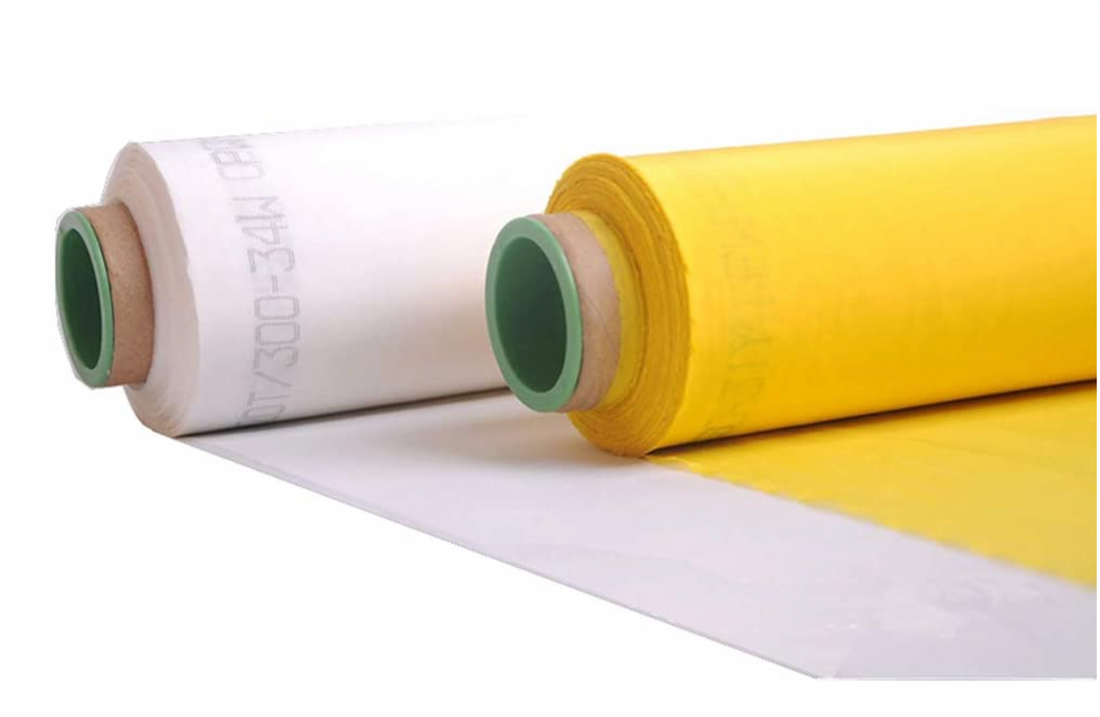Introduction
Screen printing is an incredibly versatile and popular method of transferring images and designs onto various substrates. One of the essential components of the screen printing process is selecting the right screen printing mesh for your project. This decision will significantly impact the quality and durability of your final product. In this article, we will guide you through the process of choosing the perfect screen printing mesh, taking into account factors such as ink type, artwork detail, and substrate material.

Understanding Screen Printing Mesh
Before diving into selecting the right mesh, it is crucial to understand the basics of screen printing mesh.
Types of Screen Printing Mesh
There are two main types of screen printing mesh: polyester and stainless steel. Polyester mesh is the most common and cost-effective choice for various applications, while stainless steel mesh is used for more specialized projects requiring higher durability and precision.
Mesh Count
Mesh count refers to the number of threads per inch (TPI) in the mesh. A higher mesh count results in a finer mesh, while a lower mesh count provides a coarser mesh. Higher mesh counts are suitable for detailed artwork and thinner inks, while lower mesh counts work better with thicker inks and less intricate designs.
Thread Diameter
Thread diameter is the thickness of the individual threads that make up the mesh. A thicker thread diameter increases durability and ink deposit, while a thinner thread diameter allows for more detailed prints and a smoother ink layer.
Factors to Consider When Choosing a Screen Printing Mesh
There are several factors to consider when selecting the right screen printing mesh for your project.
Ink Type
Different ink types require different mesh counts and thread diameters. For example, water-based inks work better with higher mesh counts and thinner thread diameters, while plastisol inks are suitable for lower mesh counts and thicker thread diameters.
Artwork Detail
The level of detail in your artwork will significantly influence your choice of mesh count. Fine details and halftones require higher mesh counts, while bold designs and large text can be printed using lower mesh counts.
Substrate Material
The material you're printing on will also affect your choice of mesh. Softer substrates, such as textiles, may require higher mesh counts to prevent ink bleeding. On the other hand, harder substrates like glass or metal may need lower mesh counts for better ink adhesion.
Mesh Tension
Proper mesh tension is vital for achieving high-quality prints. Low tension can lead to poor print quality and reduced durability, while excessive tension can cause mesh distortion and premature breakdown. Choose a screen printing mesh that maintains consistent tension throughout the printing process.

Recommendations for Common Projects
Here are some recommendations for choosing the right screen printing mesh for popular types of projects.
Textiles and Apparel
For textiles and apparel, such as T-shirts and tote bags, a mesh count between 110 and 160 TPI is ideal. This range works well with both water-based and plastisol inks and provides excellent detail while maintaining a soft hand feel.
Paper and Cardstock
When printing on paper and cardstock, a mesh count between 180 and 230 TPI is recommended. This range ensures sharp detail and smooth ink coverage, suitable for posters, greeting cards, and packaging materials.
Glass and Ceramics
For printing on glass and ceramics, a lower mesh count of 80 to 110 TPI is advised. This range provides a thicker ink deposit, ensuring proper adhesion and durability on non-porous surfaces.
Maintaining Your Screen Printing Mesh
Proper maintenance of your screen printing mesh is essential for ensuring consistent print quality and maximizing the lifespan of your screens. Be sure to clean your screens thoroughly after each use to prevent ink buildup and maintain consistent tension throughout the printing process.

Conclusion
Selecting the right screen printing mesh for your project is crucial for achieving optimal print quality and durability. Consider factors such as ink type, artwork detail, substrate material, and mesh tension when making your decision. By understanding these factors and following the recommendations provided, you will be well on your way to creating stunning, long-lasting screen printed projects.
Frequently Asked Questions
1. Can I use the same mesh count for all my projects?
No, the ideal mesh count will vary depending on factors like ink type, artwork detail, and substrate material. Using the same mesh count for all projects may result in poor print quality and durability.
2. Is it better to use polyester or stainless steel mesh for screen printing?
Polyester mesh is the most common and cost-effective choice for various applications. Stainless steel mesh is used for more specialized projects requiring higher durability and precision.
3. How do I know if my mesh tension is correct?
A tension meter can be used to measure mesh tension. Proper tension will ensure consistent print quality and prevent mesh distortion or breakdown.
4. Can I print on both textile and glass substrates with the same mesh count?
It's possible, but not ideal. Textile substrates typically require higher mesh counts to prevent ink bleeding, while glass substrates need lower mesh counts for better ink adhesion.
5. How often should I replace my screen printing mesh?
The lifespan of a screen printing mesh depends on factors such as usage, tension, and maintenance. Regular cleaning and tension checks will help prolong the life of your screens. Replace your mesh when print quality decreases or when the mesh becomes damaged.
Equipment
Unveiling the Best Screen Printing Machines for Beginners: Your Ultimate Guide
How to Choose the Right Screen Printing Press for Your Business: A Comprehensive Guide
The Ultimate Screen Printing Kit Buying Guide
Ink
A Beginner's Guide to Screen Printing Inks
Why Water-Based Screen Printing Ink is the Future
The Benefits of Using Discharge Screen Printing Ink
Screen
How to Choose the Right Screen Printing Mesh for Your Project
Everything You Need to Know About Screen Printing Frames
The Ultimate Guide to Screen Printing Emulsion
Technique
7 Essential Screen Printing Techniques for Beginners
How to Screen Print on Fabric: A Beginner's Guide
The Basics of Screen Printing on Paper
Service
Get Custom Screen Printing for Your Business or Event
Find Screen Printing Services Near You
The Best Online Screen Printing Services for Your Business
Supplies
The Essential Screen Printing Supplies You Need

